Santosh K. Suram
UniMat: Unifying Materials Embeddings through Multi-modal Learning
Nov 13, 2024
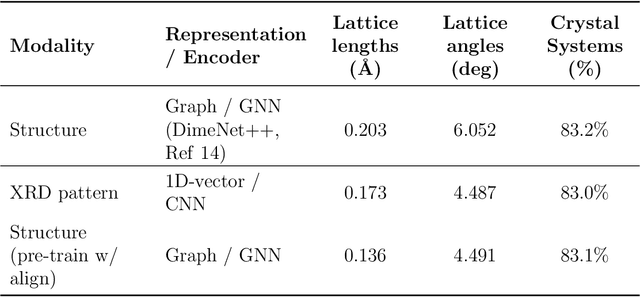
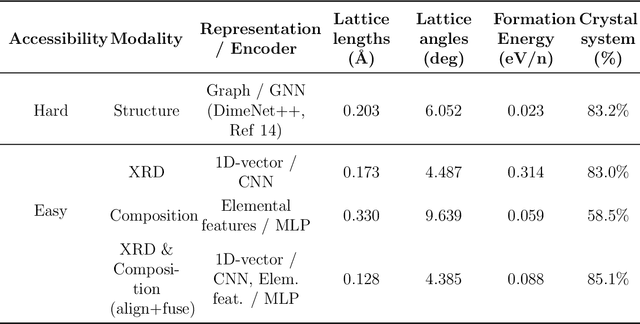

Abstract:Materials science datasets are inherently heterogeneous and are available in different modalities such as characterization spectra, atomic structures, microscopic images, and text-based synthesis conditions. The advancements in multi-modal learning, particularly in vision and language models, have opened new avenues for integrating data in different forms. In this work, we evaluate common techniques in multi-modal learning (alignment and fusion) in unifying some of the most important modalities in materials science: atomic structure, X-ray diffraction patterns (XRD), and composition. We show that structure graph modality can be enhanced by aligning with XRD patterns. Additionally, we show that aligning and fusing more experimentally accessible data formats, such as XRD patterns and compositions, can create more robust joint embeddings than individual modalities across various tasks. This lays the groundwork for future studies aiming to exploit the full potential of multi-modal data in materials science, facilitating more informed decision-making in materials design and discovery.
Phase-Mapper: An AI Platform to Accelerate High Throughput Materials Discovery
Oct 07, 2016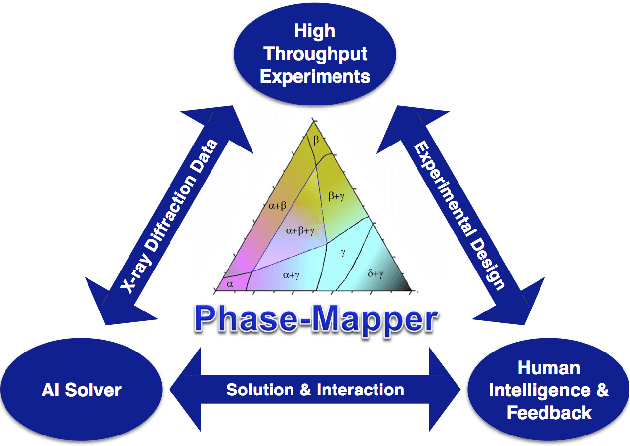
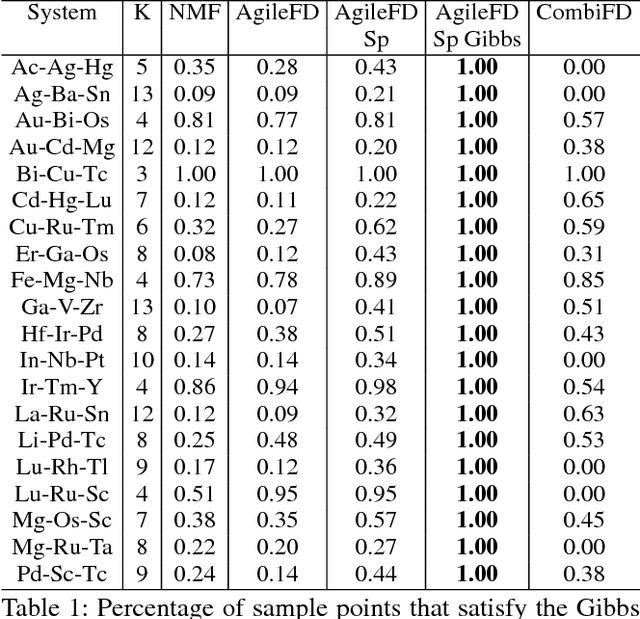

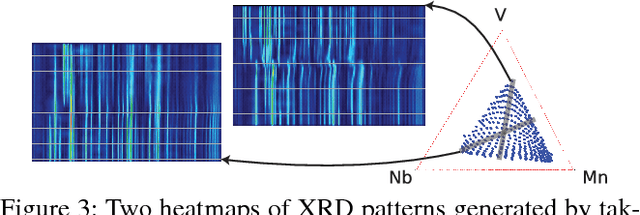
Abstract:High-Throughput materials discovery involves the rapid synthesis, measurement, and characterization of many different but structurally-related materials. A key problem in materials discovery, the phase map identification problem, involves the determination of the crystal phase diagram from the materials' composition and structural characterization data. We present Phase-Mapper, a novel AI platform to solve the phase map identification problem that allows humans to interact with both the data and products of AI algorithms, including the incorporation of human feedback to constrain or initialize solutions. Phase-Mapper affords incorporation of any spectral demixing algorithm, including our novel solver, AgileFD, which is based on a convolutive non-negative matrix factorization algorithm. AgileFD can incorporate constraints to capture the physics of the materials as well as human feedback. We compare three solver variants with previously proposed methods in a large-scale experiment involving 20 synthetic systems, demonstrating the efficacy of imposing physical constrains using AgileFD. Phase-Mapper has also been used by materials scientists to solve a wide variety of phase diagrams, including the previously unsolved Nb-Mn-V oxide system, which is provided here as an illustrative example.
Pattern Decomposition with Complex Combinatorial Constraints: Application to Materials Discovery
Nov 27, 2014

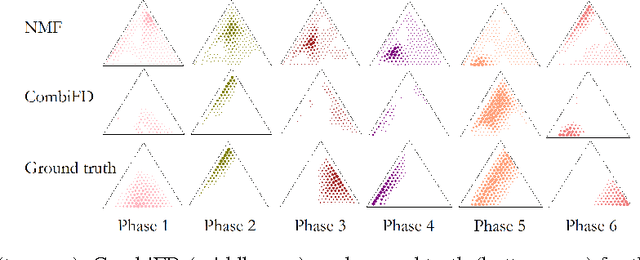
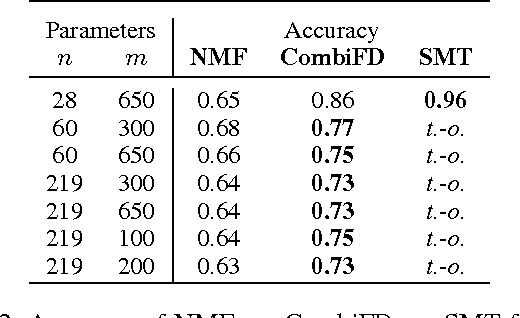
Abstract:Identifying important components or factors in large amounts of noisy data is a key problem in machine learning and data mining. Motivated by a pattern decomposition problem in materials discovery, aimed at discovering new materials for renewable energy, e.g. for fuel and solar cells, we introduce CombiFD, a framework for factor based pattern decomposition that allows the incorporation of a-priori knowledge as constraints, including complex combinatorial constraints. In addition, we propose a new pattern decomposition algorithm, called AMIQO, based on solving a sequence of (mixed-integer) quadratic programs. Our approach considerably outperforms the state of the art on the materials discovery problem, scaling to larger datasets and recovering more precise and physically meaningful decompositions. We also show the effectiveness of our approach for enforcing background knowledge on other application domains.
 Add to Chrome
Add to Chrome Add to Firefox
Add to Firefox Add to Edge
Add to Edge